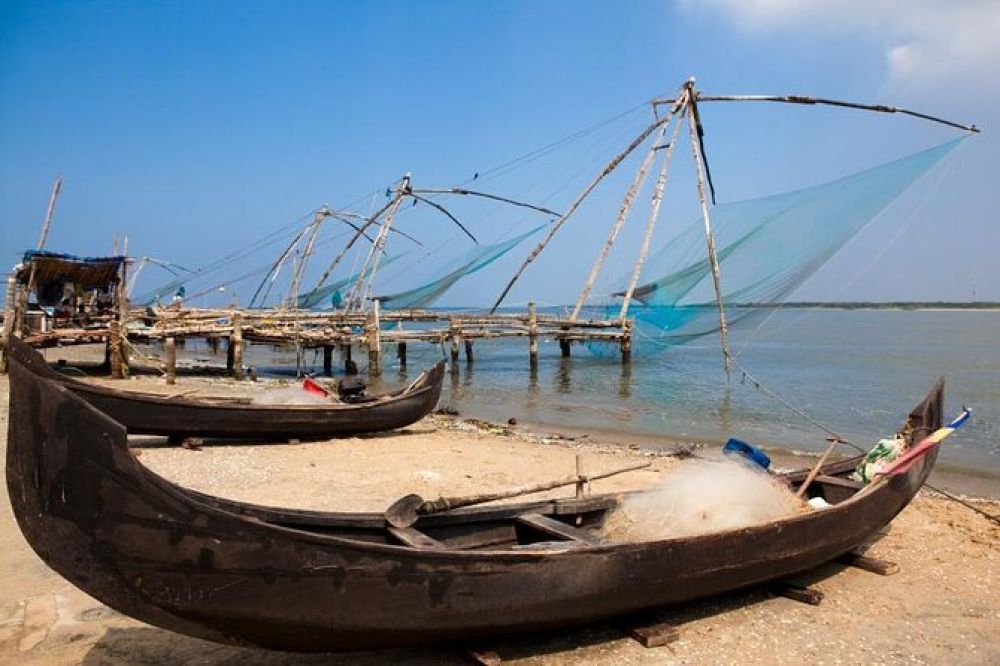

The Chinese fishing nets, locally known as 'Cheena vala,' are one of the most iconic attractions in Kochi (Cochin), Kerala, India. These unique shore-operated lift nets have a history that is intrinsically linked with the age-old Chinese trade relations with the Malabar Coast. Although the exact origin of the nets is uncertain, they are commonly attributed to traders from the court of Kublai Khan, the Mongolian Emperor, who is said to have introduced these nets to the fishermen in Kochi in the 14th century.
The arrival of the Chinese fishing nets is steeped in the lore of maritime trade between the Chinese and the local kingdoms. Historically, Kochi was a bustling port city frequented by Arab, Chinese, and European traders. The nets provided an efficient and inimitable method of catching fish for the thriving coastal community. As Kochi evolved into a significant trading post, the governing rulers encouraged the maintenance of these nets, recognizing their economic importance.
Today, the Chinese fishing nets have become an emblem of Kerala’s rich cultural heritage and a must-visit tourist spot in Kochi. The silhouette of the nets against the backdrop of the setting sun is a singular visual experience, celebrated in photographs and travelogues, attracting tourists from around the world. Owing to this unique appeal, local authorities and the tourism board have been actively promoting the Chinese fishing nets as a key historical attraction.
The Chinese fishing nets have also significantly influenced the local economy. Surrounding the nets are bustling fish markets where the day's catch is sold. This supports not only the fishermen but also a variety of local vendors and artisans who cater to tourists. The presence of these nets has fostered a microcosm of cultural commerce, offering a taste of local life to international and domestic visitors.
In spite of their popularity, the Chinese fishing nets are faced with challenges such as deterioration due to weathering and the increasing costs of maintenance. Conservation efforts have been initiated to preserve these historical structures. The government, along with local stakeholders, is engaged in finding sustainable methods to maintain the nets for future generations while keeping the practice economically viable for the fishermen.
For tourists, experiencing the Chinese fishing nets involves more than just watching the sunset. Visitors can interact with the fishermen, learn about the operation of the nets, and even indulge in a hands-on experience. The seafood delicacies prepared freshly at nearby stalls provide a culinary adventure, combining the enjoyment of local flavors with the cultural spectacle of the nets.
In recent times, there has been a focus on promoting responsible tourism around the Chinese fishing nets. Cultural tours, eco-friendly practices, and educational programs have been designed to enhance the visitor experience whilst ensuring the protection of this historic method of fishing. This form of experiential and sustainable tourism aligns with global trends and preferences of tourists who seek authenticity and environmental stewardship in their travels.
In conclusion, the Chinese fishing nets of Kochi symbolize a historical fusion that transcends geographies and time. As a poignant reminder of Kerala’s past, they continue to attract and charm visitors, playing a pivotal role in the enduring narrative of tourism in this coastal state.